The resort town of Menton on the Mediterranean Sea boasts the most interesting parks and gardens that are an invitation to the exotic. You’ll find intimate parks and exuberant or botanical gardens. This article gives you a shortlist of Menton’s parks and gardens to discover on your next visit to the “Pearl of France”.
About Menton’s Parks and Gardens
For several decades, the philosophy and vision of the municipality can be summed up in one phrase:
“Menton: my city is a garden”
Indeed, Menton is proud of its vocation as a green city.
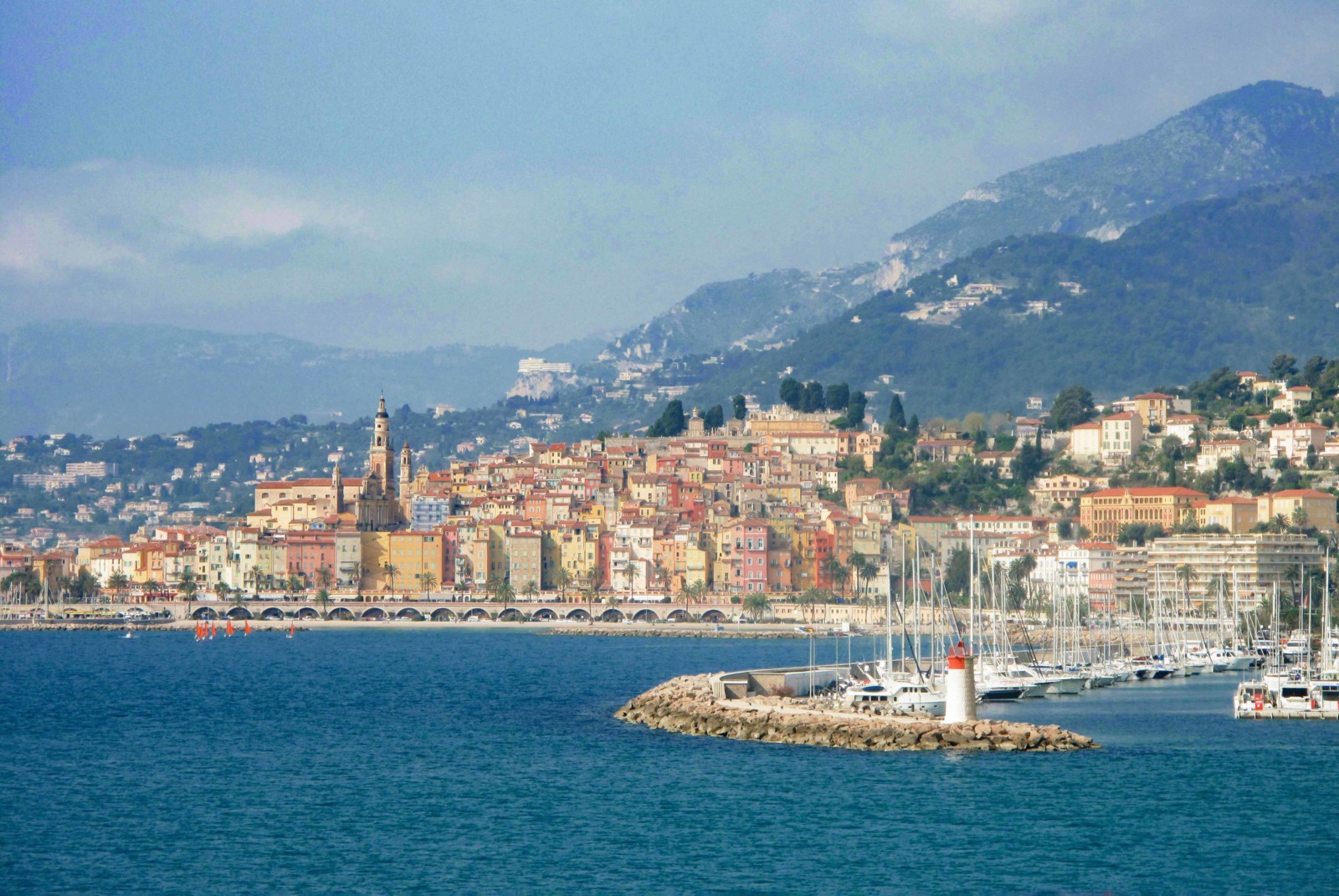
The Mediterranean resort has a particularly rich botanical and plant heritage that is unique in the world.
Menton’s parks and gardens have enabled it to be included in the closed circle of 4-flower cities that have also received the prestigious “Fleur d’Or” (Golden Flower).
Most of Menton’s parks and gardens are located to the east of the town. They are protected by the cliffs known as the Balzi Rossi.
To find out the visiting times and entry fees for the various parks and gardens in Menton listed below, please contact the tourist office. It is also possible to take part in guided tours in some gardens.
Jardins Biovès
City-Centre / 06500 MENTON
![Jardins Biovès © Berthold Werner - licence [CC BY-SA 3.0] from Wikimedia Commons](https://frenchmoments.eu/wp-content/uploads/2014/08/Menton-Jardins-Bioves-©-Berthold-Werner-licence-CC-BY-SA-3.0-from-Wikimedia-Commons.jpg)
The Jardins Biovès is a beautiful flowery promenade 800 metres long. It is located in the heart of the city, opposite the Palais de l’Europe which houses the Tourist Office of the city of Menton.
![Palais de l'Europe © Berthold Werner - licence [CC BY-SA 3.0] from Wikimedia Commons](https://frenchmoments.eu/wp-content/uploads/2014/08/Menton-Palais-de-lEurope-©-Berthold-Werner-licence-CC-BY-SA-3.0-from-Wikimedia-Commons.jpg)
These gardens are named after Emile Biovès, mayor of Menton at the end of the 19th century. The promenade covers the Careï river and displays flowering lawns, exotic species, fountains and sculptures throughout the year.
![Menton Lemon Festival © Bohyunlee - licence [CC BY-SA 4.0] from Wikimedia Commons](https://frenchmoments.eu/wp-content/uploads/2014/02/Menton-Lemon-Festival-02-©-Bohyunlee-licence-CC-BY-SA-4.0-from-Wikimedia-Commons.jpg)
A festive garden
The municipality decorates the gardens with special lights and structures at Christmas and during the Lemon Festival.

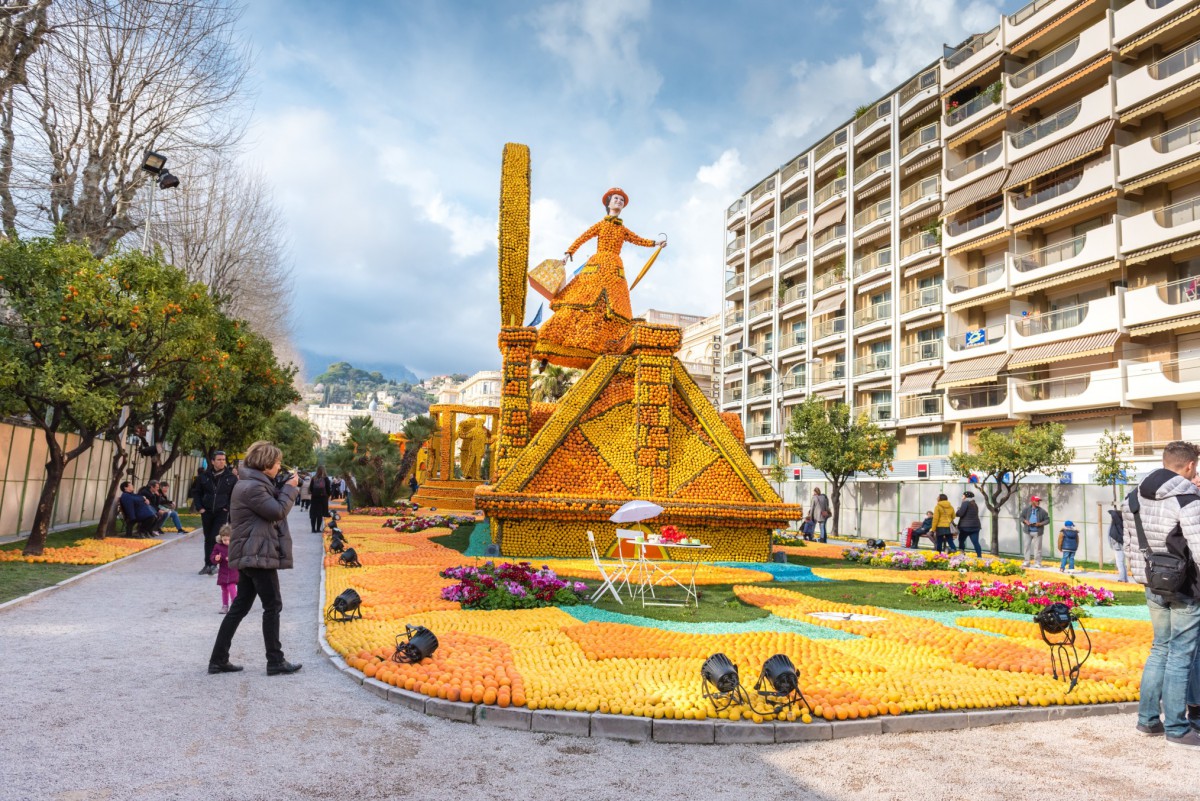
In front of you, look up to see the perched fort of Sainte Agnès at the top of the mountain.

The Rattachement Monument
It is in this garden that you’ll find the monument of the union of Menton to France.

A little recap. Menton and neighbouring Roquebrune have been Monegasque since 1346 and became French for the first time in 1793. Then both of them definitively and officially incorporated into France on 2 February 1861 following the 1860 referendum. The Rattachement Monument in the Biovès gardens commemorates these two dates.
The monument is the work of the architect Emile Vaudremer (1829-1914) and the sculpture of Denys Puech (1854-1942).
Puech was also responsible for the statue of Music on the façade of the Opéra-Comique in Paris.
The monument represents a great and beautiful woman: France. She welcomes, like a new mother, a little girl from Menton whom she protects with the tricolour flag. At their feet are lemons and olives, the gifts of Menton to its new country.
Serre de la Madone
74, Route de Gorbio / 06500 MENTON
The Serre de la Madone is a pleasure garden located on the heights of Menton. It is appreciated for its rich collection of plants illustrating Mediterranean plants.
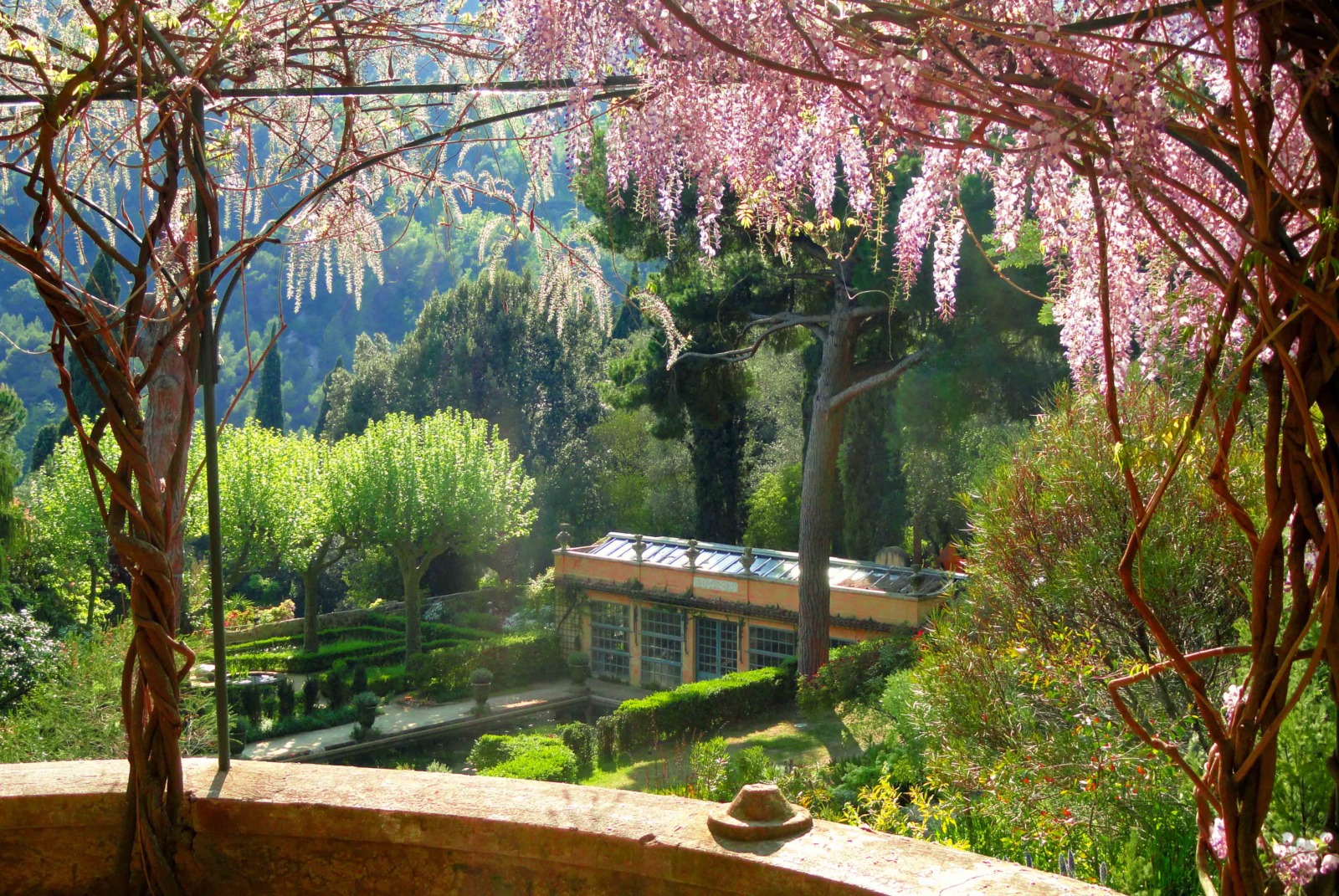
Lawrence Johnston’s garden
The garden was created by Lawrence Johnston, an American citizen born in Paris on 12 October 1871, who became a British citizen in 1900.
After the First World War, he discovered an ideal site for a garden on the French Riviera in Menton, where his mother spent her winter holidays.
On 24 June 1924, he bought some land on the heights of Menton. Between 1927 and 1931, he travelled to South Africa, China and America to acquire rare plants.
With help, he transformed an estate planted with lemon and olive trees into a pleasure garden.
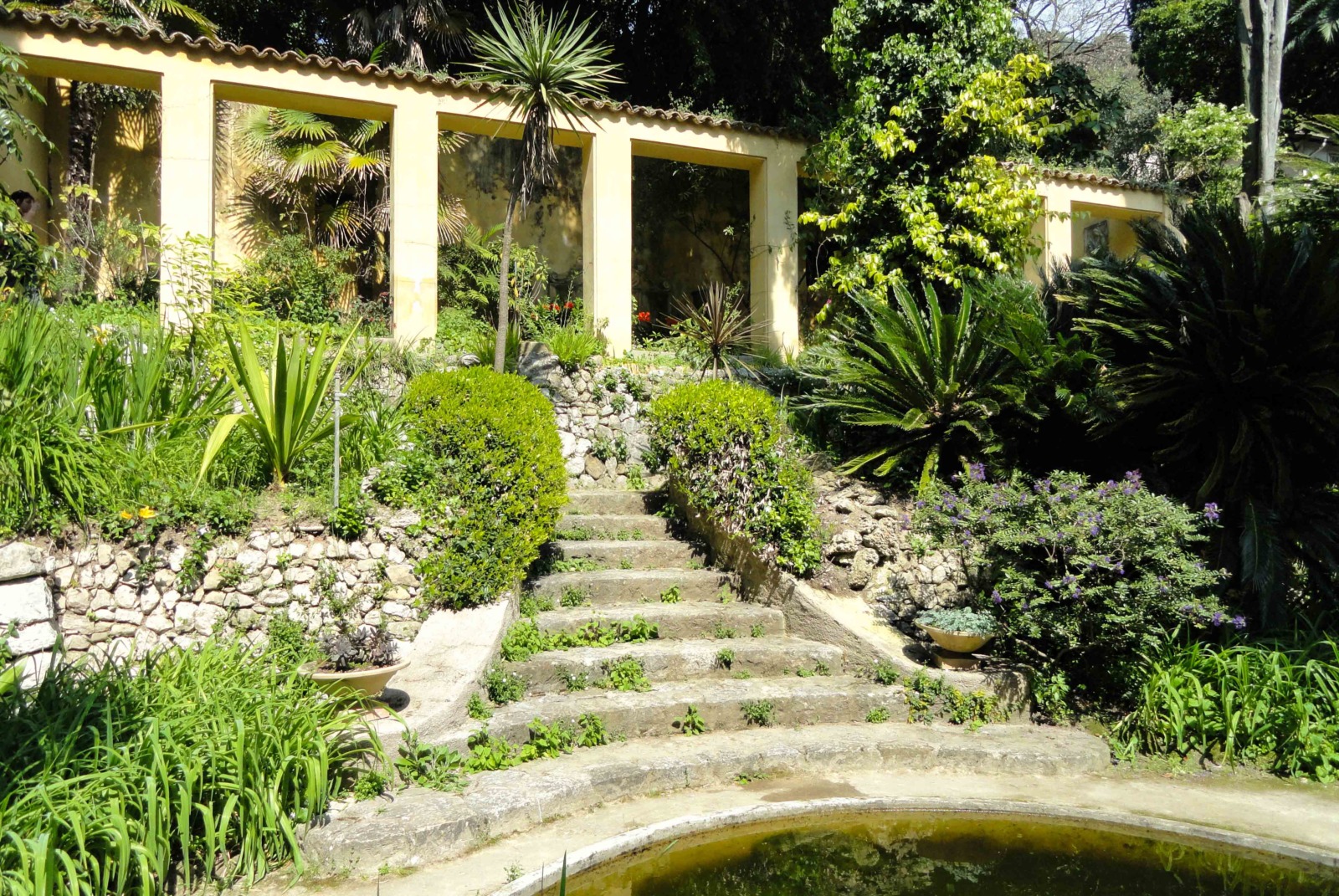
The garden is laid out on terraces. A villa built at an altitude of 80 metres separates the agricultural area from the forest area.

To supply his garden, he built or modernised twelve cisterns, providing him with a reserve of 1,000 m3 of water.

At the beginning of the Second World War, Johnston left his garden and Menton to return to England. The property was looted during the Italian and German Occupations. Johnston did not return until 1949 and died there on 27 April 1958.
The property was left to Norah Lindsay, a garden enthusiast, during his lifetime. After her death, her daughter Nancy Lindsay (1896-1973), a rose enthusiast, inherited it.
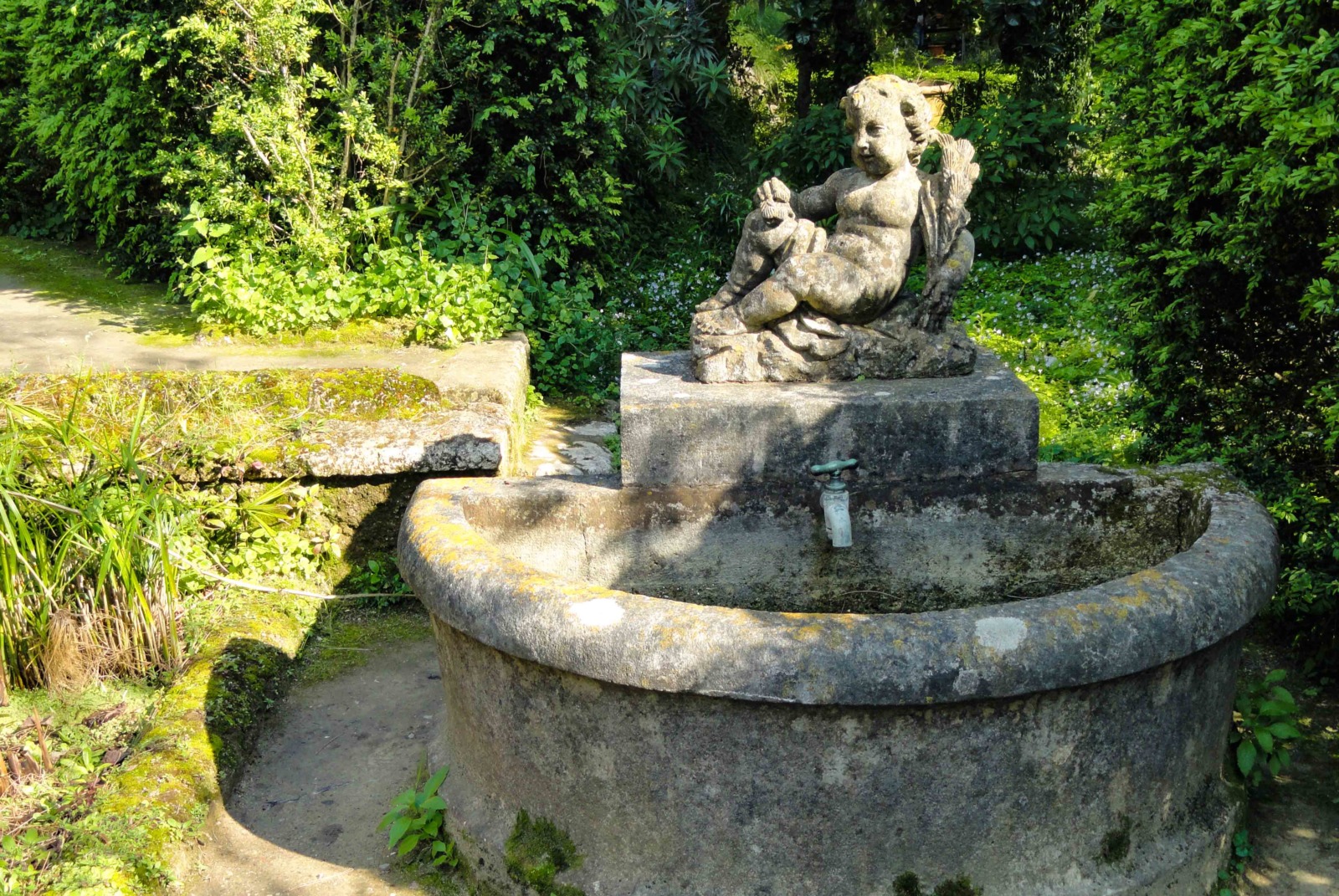
The garden today
Finally, the Conservatoire de l’espace littoral et des rivages lacustres bought the estate in 1999. The organisation then began work on restoring the gardens.



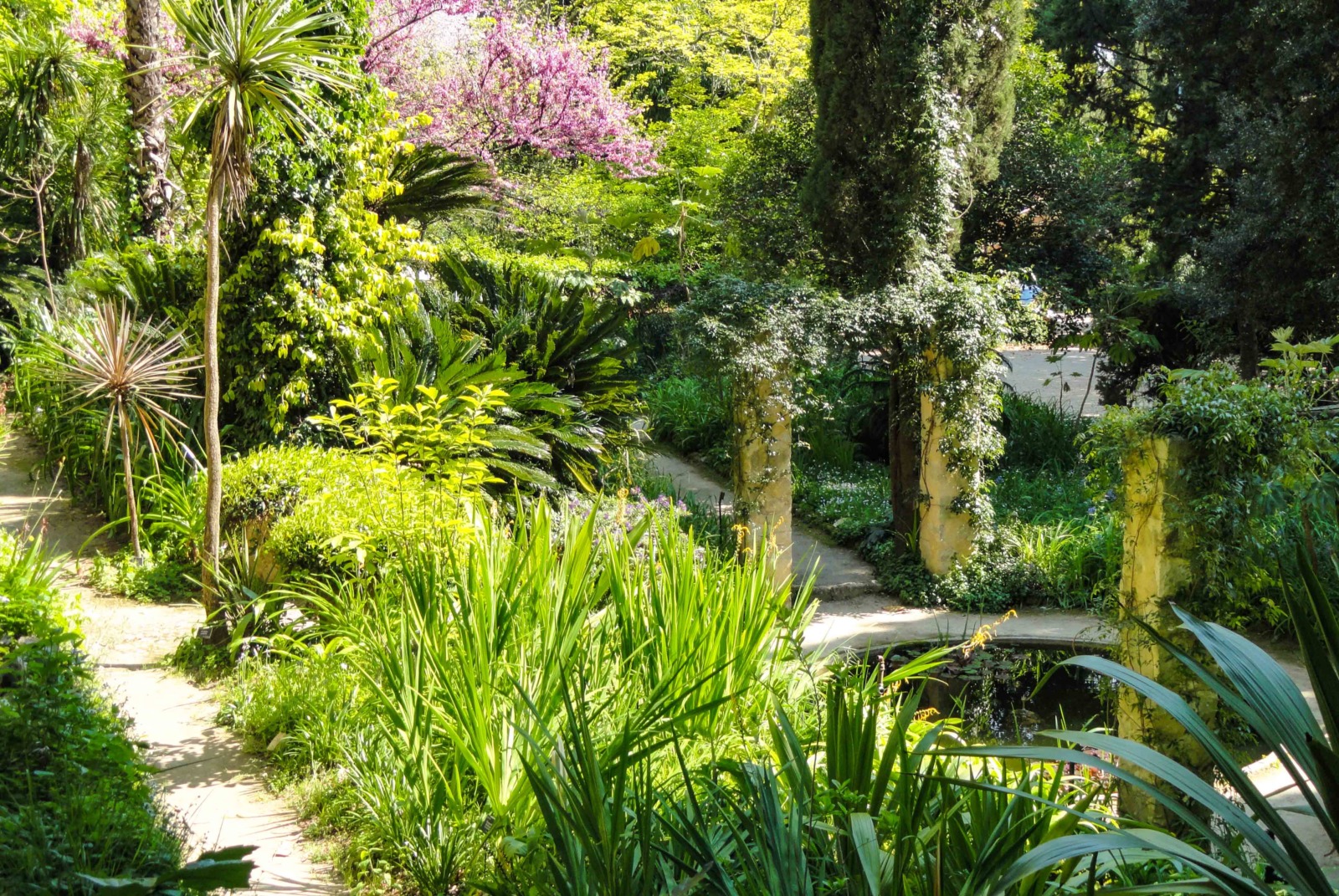
Val Rahmeh Botanical Garden
Avenue Saint-Jacques / 06500 MENTON
The Val Rahmeh Botanical Garden is a tourist destination in Menton located near the seaside.
![The Victoria amazonica pond in the southernmost point of the garden © Gossipguy - licence [CC BY-SA 4.0] from Wikimedia Commons](https://frenchmoments.eu/wp-content/uploads/2014/08/Val-Ramheh-©-Gossipguy-licence-CC-BY-SA-4.0-from-Wikimedia-Commons.jpg)
The history of the botanical garden
Originally, the Val Rahmeh garden was part of a small property owned by a family from Menton, the De Monléon. In the 19th century, the estate consisted of a few plots of land and a villa in the Italian-Provençal style.
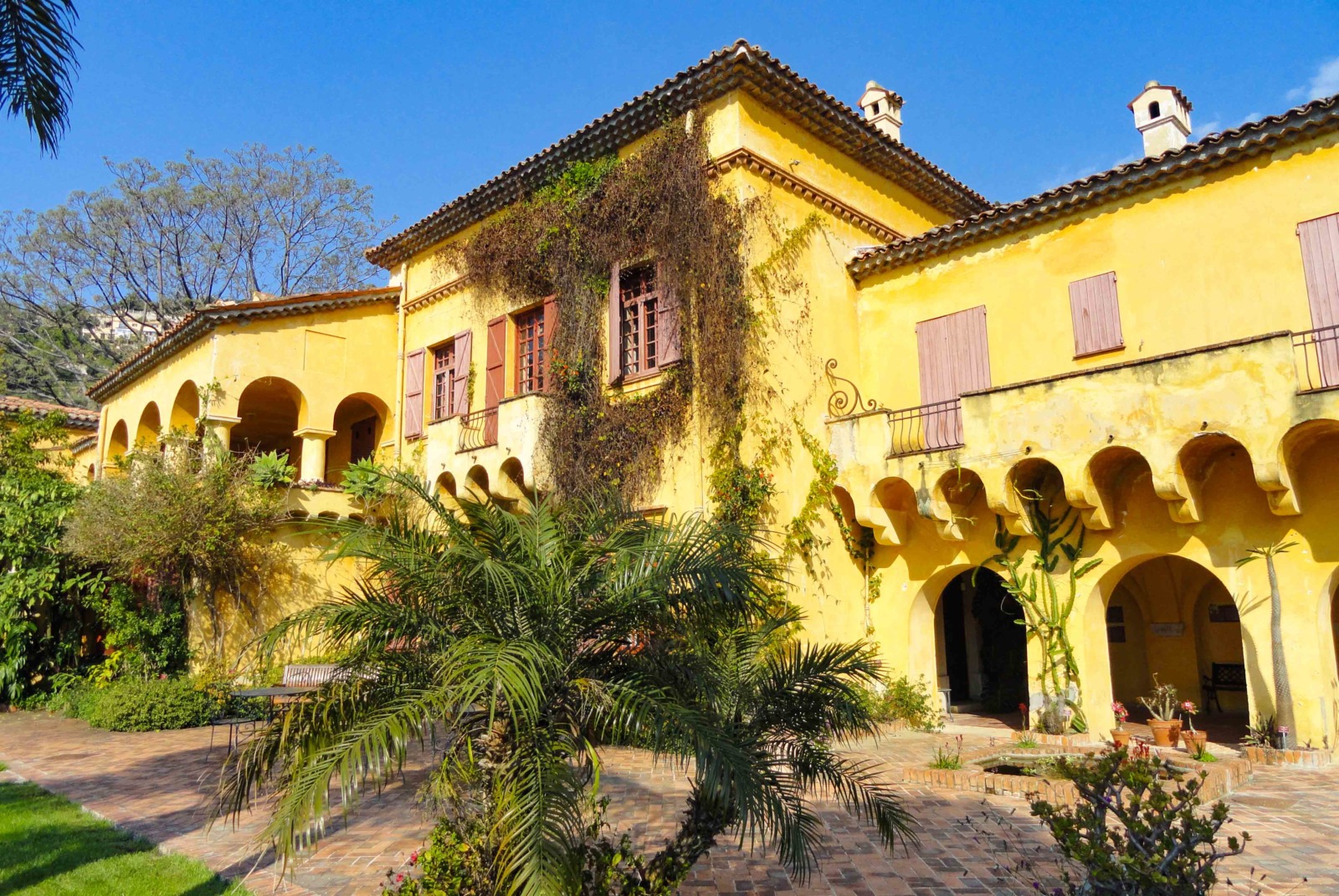
Sir Percy Radcliffe, former governor of Malta, bought the property in 1905. His wife’s name was Rahmeh (an Arabic-Persian word meaning ‘tranquillity’).
The couple expanded the villa and especially the garden, buying up neighbouring land.
The Radcliffes planted many Mediterranean species in the garden. You can admire the Canary date palms that make up the main avenue.
However, they kept some of the previously planted olive trees, which are centuries old.
Then, various owners succeeded one another until 1957, when Miss May Bud Campbell, a wealthy English woman with a passion for botany, bought the site. She enlarged the estate in its lower part and enriched the garden with many exotic species, particularly Solanaceae. Heavily in debt, she was forced to sell and entrusted her garden to the French State on 3 March 1966.
The State then entrusted the National Museum of Natural History with the management of the garden. This is a French institution based in the Jardin des Plantes in Paris. Finally, the garden opened its doors to the public for the first time in 1967.
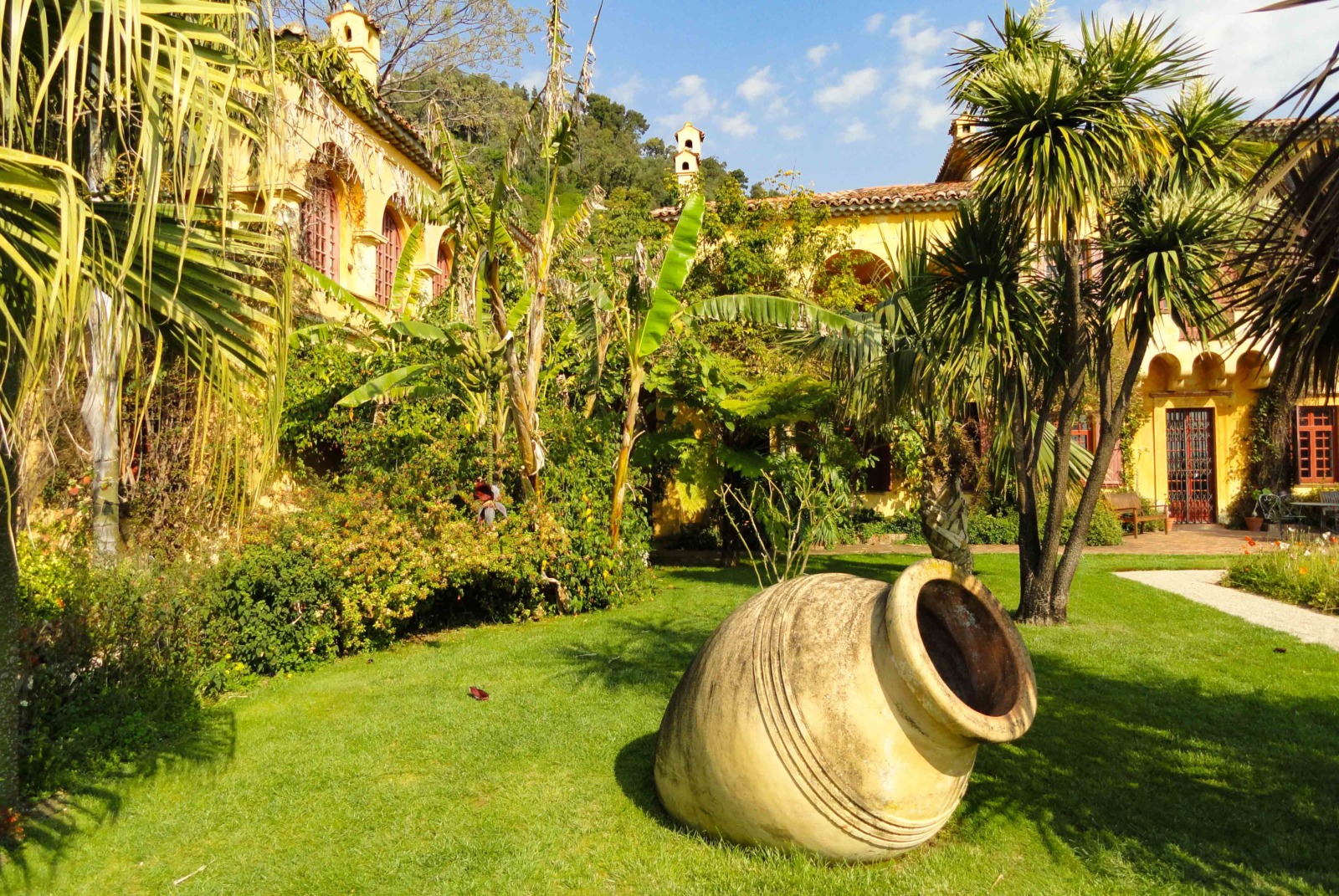
The Garden’s plantations
The garden has an exceptional collection of plants for its latitude.
Menton, and especially the Bay of Garavan, has a particularly mild and sunny climate even in winter. In addition, the regular humidity favours the development of subtropical and tropical plants that would not grow elsewhere in France.

The collections alternate plants from several climates:
- Mediterranean (California, Chile, South Africa, South West Australia and the Mediterranean Basin of course)
- subtropical and tropical (West Indies, Mexico, Brazil, India, China, Japan, Australia and New Zealand).
They are distributed in various zones corresponding to specific ecological requirements (humid tropics, dry tropics, water basins, etc.).
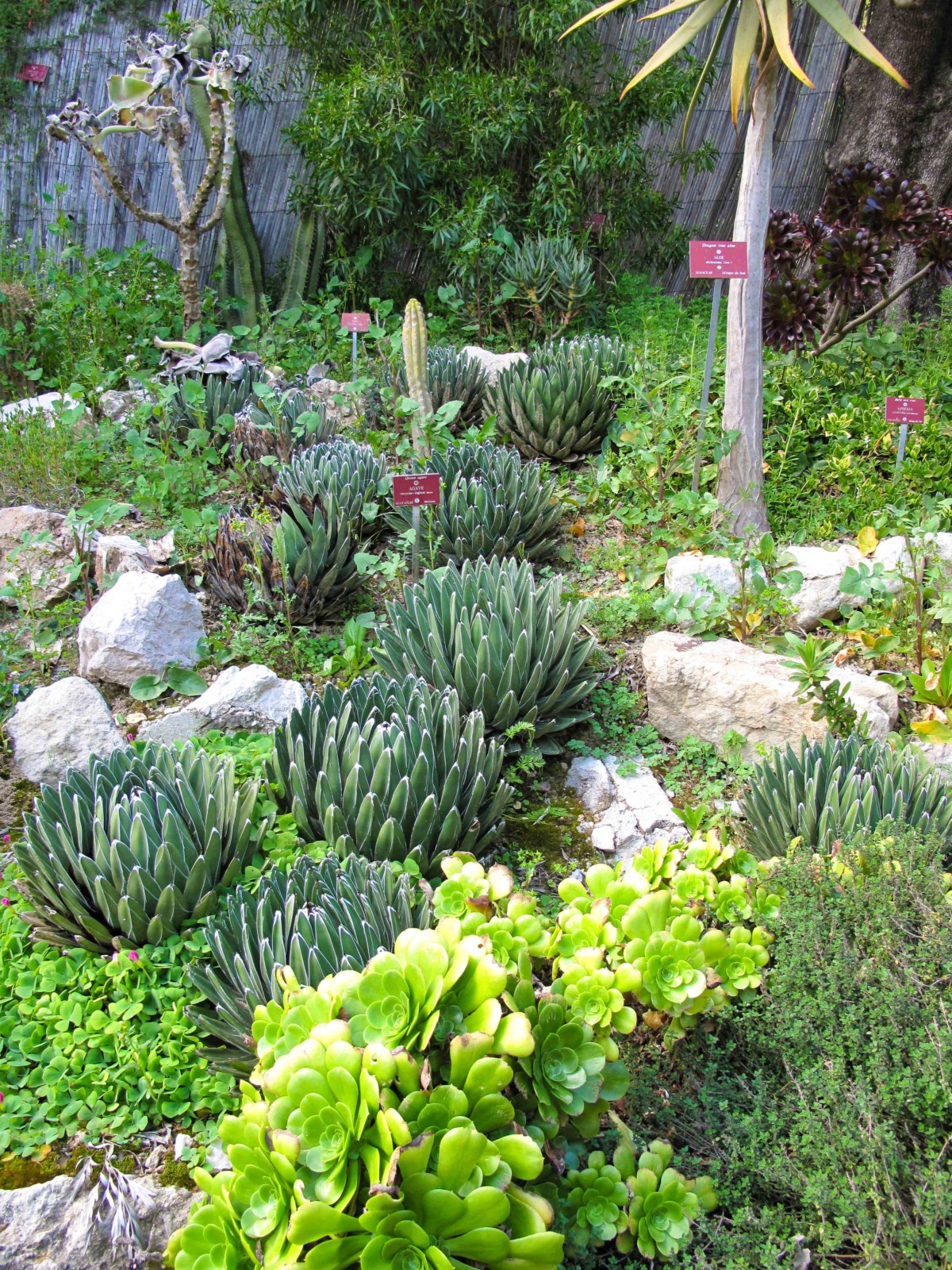
There are numerous species known as succulents (cacti, agaves, aloes, etc.), daturas and other magic plants, four-century-old olive trees, palms (Arecaceae) and numerous tree ferns (Cyatheaceae).
![Villa Rameh © Berthold Werner - licence [CC BY-SA 3.0] from Wikimedia Commons](https://frenchmoments.eu/wp-content/uploads/2014/08/Val-Rameh-©-Berthold-Werner-licence-CC-BY-SA-3.0-from-Wikimedia-Commons.jpg)
Alongside the citrus collection, a vegetable garden contains edible species from all over the world (lychee, guava, melon pear, taro, etc.).
In the southernmost point of the garden, the Victoria Amazonica pond is home to Victoria cruziana. This giant water lily from the Amazon is famous for its leaves, which can be more than 2 metres in diameter.
![The Victoria amazonica pond, Val Rameh © Berthold Werner - licence [CC BY-SA 3.0] from Wikimedia Commons](https://frenchmoments.eu/wp-content/uploads/2014/08/Val-Rameh-2-©-Berthold-Werner-licence-CC-BY-SA-3.0-from-Wikimedia-Commons.jpg)
Finally, the garden houses specimens of several plants that have become extinct in their natural environment, in particular the Sophora toromiro, native to Easter Island.

The citrus garden of Palais Carnolès
3 Avenue de la Madone / 06500 MENTON

The citrus garden (in French: jardin d’agrumes du Palais Carnolès) is located on land that Prince Antonio I (1681-1731) bought from the monks of Lérins in 1717.
The Prince of Monaco decided to build a Trianon-inspired palace surrounded by orchards.

The architect Latour created the “prince’s garden” in 1725. A plan of the time mentions a magnificent vegetable garden laid out with star-shaped paths and irrigated by two water jet ponds.
Originally, the property was surrounded by a high wall covered with grape trees and planted with Portuguese orange trees.
Today, tall Phoenix canariensis palms line the main path. The garden has featured contemporary art statues since 1994.

This garden has the most important collection of citrus fruit in Europe – 137 species including
- 24 citrus sinensis,
- 6 citrus aurantium, and
- 6 citrus lemon.
![Menton's Parks and Gardens - Jardin du Palais Carnolès © Parisette - licence [CC BY-SA 3.0] from Wikimedia Commons](https://frenchmoments.eu/wp-content/uploads/2014/08/Jardin-du-Palais-Carnolès-©-Parisette-licence-CC-BY-SA-3.0-from-Wikimedia-Commons.jpg)
The domain bears the labels “Jardin Remarquable” and “Monument Historique”.
Fontana Rosa Garden
Avenue Blasco Ibanez / 06500 MENTON
![The gardens of Fontana Rosa © Miniwark - licence [CC BY-SA 3.0] from Wikimedia Commons](https://frenchmoments.eu/wp-content/uploads/2014/08/Fontana-Rosa-02-©-Miniwark-licence-CC-BY-SA-3.0-from-Wikimedia-Commons.jpg)
Located in Avenue Blasco-Ibanez, the garden of Fontana Rosa is reminiscent of the Belle Époque era and was inspired by Andalusian and Arabian-Persian styles.
Laid out from 1922 by Spanish writer Vicente Blasco Ibáñez (1869-1928), it is also called “The Novelists’ Garden” (‘Le Jardin des Romanciers’ in French or ‘El Jardín de los Novelistas’ in Spanish).
![A basin in the Fontana Rosa gardens © Parisette - licence [CC BY-SA 4.0] from Wikimedia Commons](https://frenchmoments.eu/wp-content/uploads/2014/08/Fontana-rosa-fontain-©-Parisette-licence-CC-BY-SA-4.0-from-Wikimedia-Commons.jpg)
Many exotic plants grow there: Ficus macrophylla, Araucaria heterophylla, palm trees, banana trees and scented rose bushes.
![The Fontana Rosa Gardens © Miniwark - licence [CC BY-SA 3.0] from Wikimedia Commons](https://frenchmoments.eu/wp-content/uploads/2014/08/Fontana-Rosa-©-Miniwark-licence-CC-BY-SA-3.0-from-Wikimedia-Commons-1-scaled.jpg)
The Fontana Rosa garden pays tribute to Blasco Ibáñez’ favourite writers (Cervantes, Dickens, Shakespeare and Honoré de Balzac) whose portraits can be found on the entrance gate of the domain.
![Entrance to the Fontana Rosa Gardens (author unknown) - licence [CC BY-SA 3.0] from Wikimedia Commons](https://frenchmoments.eu/wp-content/uploads/2014/08/Fontana-Rosa-author-unknown-licence-CC-BY-SA-3.0-from-Wikimedia-Commons.jpg)
Blasco Ibáñez’ son inherited the domain and later donated it to the municipality of Menton in 1970.
Villa Maria Serena
21 Promenade Reine-Astrid / 06500 MENTON
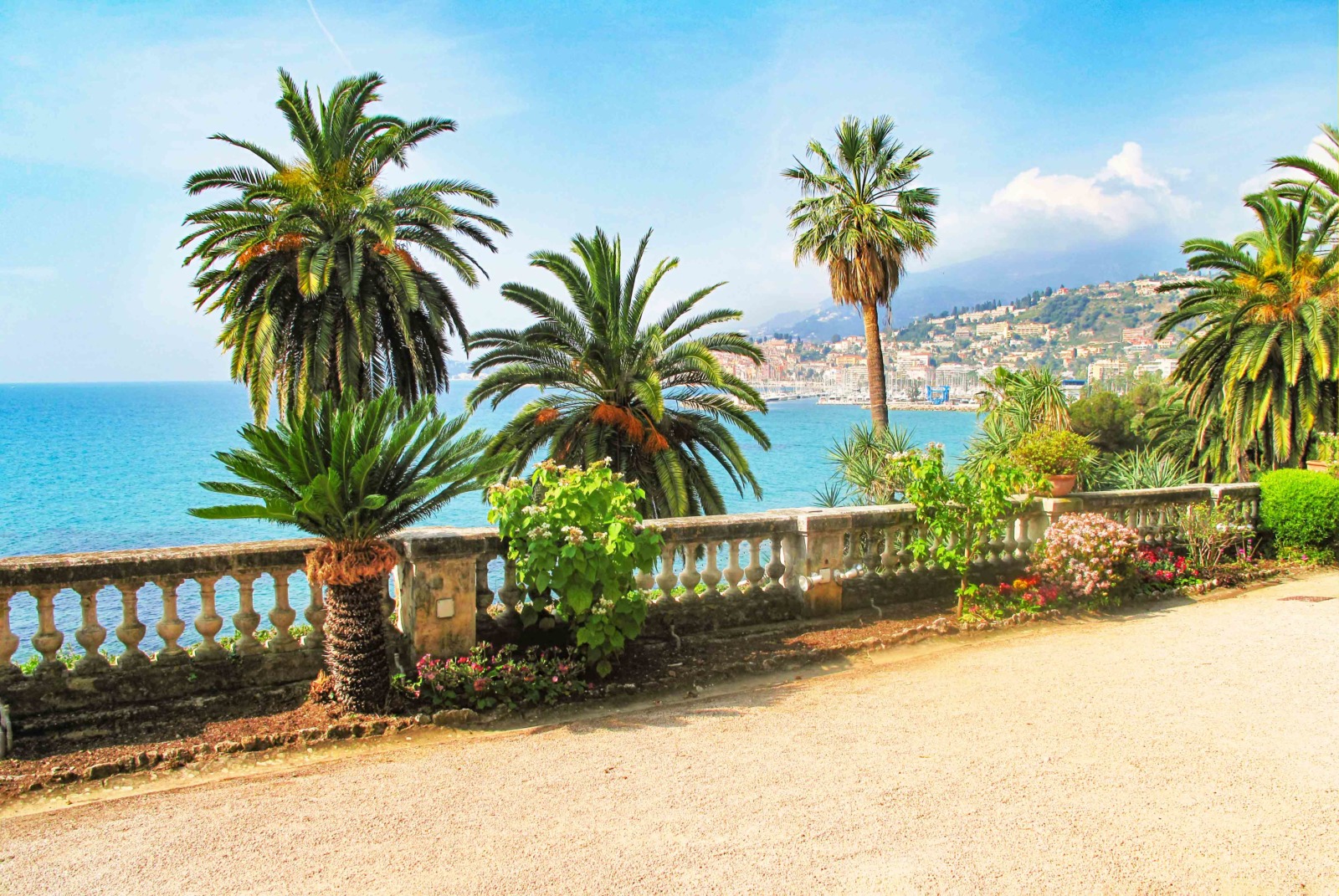
At the foot of the cliffs along the Italian border, the Villa Maria Serena is magnificently set out in its gardens. The palm trees and cycas have given the district the nickname of “Little Africa”.
History of the gardens
The Villa Maria Serena dates from 1886 and is the work of the architect Pierre Jansoulin who built it for the French ambassador to Austria Louis-Alexandre Foucher de Careil (1826-1891). Its eclectic style is close to that of the villas designed by the architect Charles Garnier in the French Riviera.
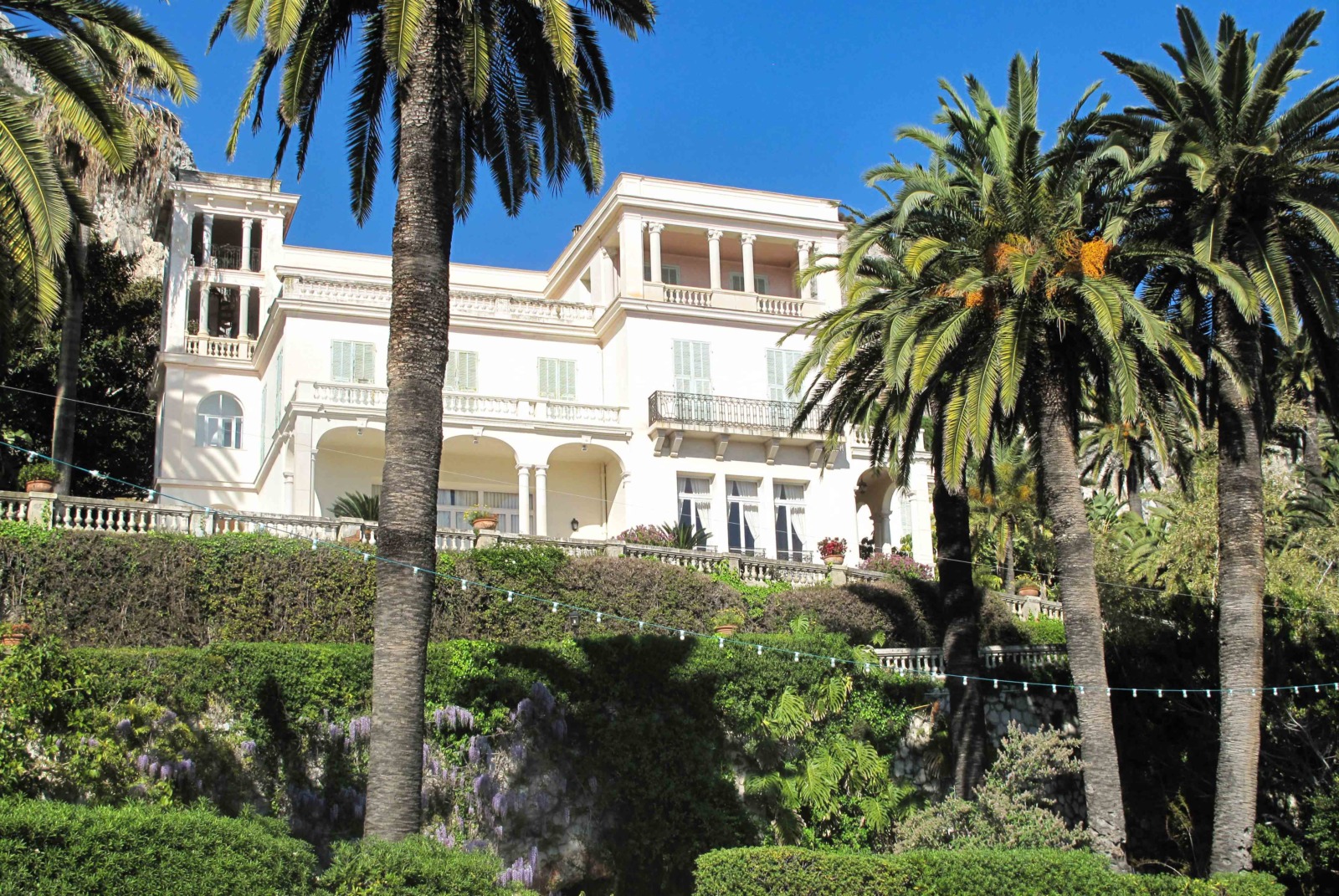
Celebrities visited the domain, including Empress Elisabeth of Austria, also known as Sissi.
In 1922, the Anglo-American banker Henry König acquired the estate. He had to leave it at the beginning of the Second World War. The war seriously damaged the house and its park because of their strategic locations on the border, hence cutting the tower of the villa by one floor. König donated it to the city of Menton in 1947.
After its restoration, the villa welcomed distinguished guests (President René Coty, Queen Astrid) and is still used today for municipal receptions.
The garden of the Villa Maria Serena
Like many of Menton’s parks and gardens, the Villa Maria Serena offers a magnificent view of the old town and the bay.
![Menton's Parks and Gardens - Villa Serena © Parisette - licence [CC BY-SA 3.0] from Wikimedia Commons](https://frenchmoments.eu/wp-content/uploads/2014/08/Villa-Serena-©-Parisette-licence-CC-BY-SA-3.0-from-Wikimedia-Commons.jpg)
The garden is reputed to be the most temperate in France. Indeed, temperatures do not fall below 5°. This is due to the presence of the high cliffs of the Balzi Rossi which mark the French-Italian border. These protect the garden from frost.
![Menton's Parks and Gardens - Villa Serena © Parisette - licence [CC BY-SA 3.0] from Wikimedia Commons](https://frenchmoments.eu/wp-content/uploads/2014/08/Villa-Serena-02-©-Parisette-licence-CC-BY-SA-3.0-from-Wikimedia-Commons.jpg)
The garden was laid out in Victorian style at the end of the 19th century. As a result, it is known as the most oriental garden in France.
In addition, it covers one and a half hectares and consists of tropical and subtropical plants. Some of them are exceptionally large, such as the Strelitzia alba sheaf, and others are curiosities, such as the Canary Island dragon tree or the Chorisia speciosa. The species Xanthoceras sorbifolium, which originates from China, can also be found here.

Curiously, the trunks of some of the palms still bear traces of fighting from the Second World War.
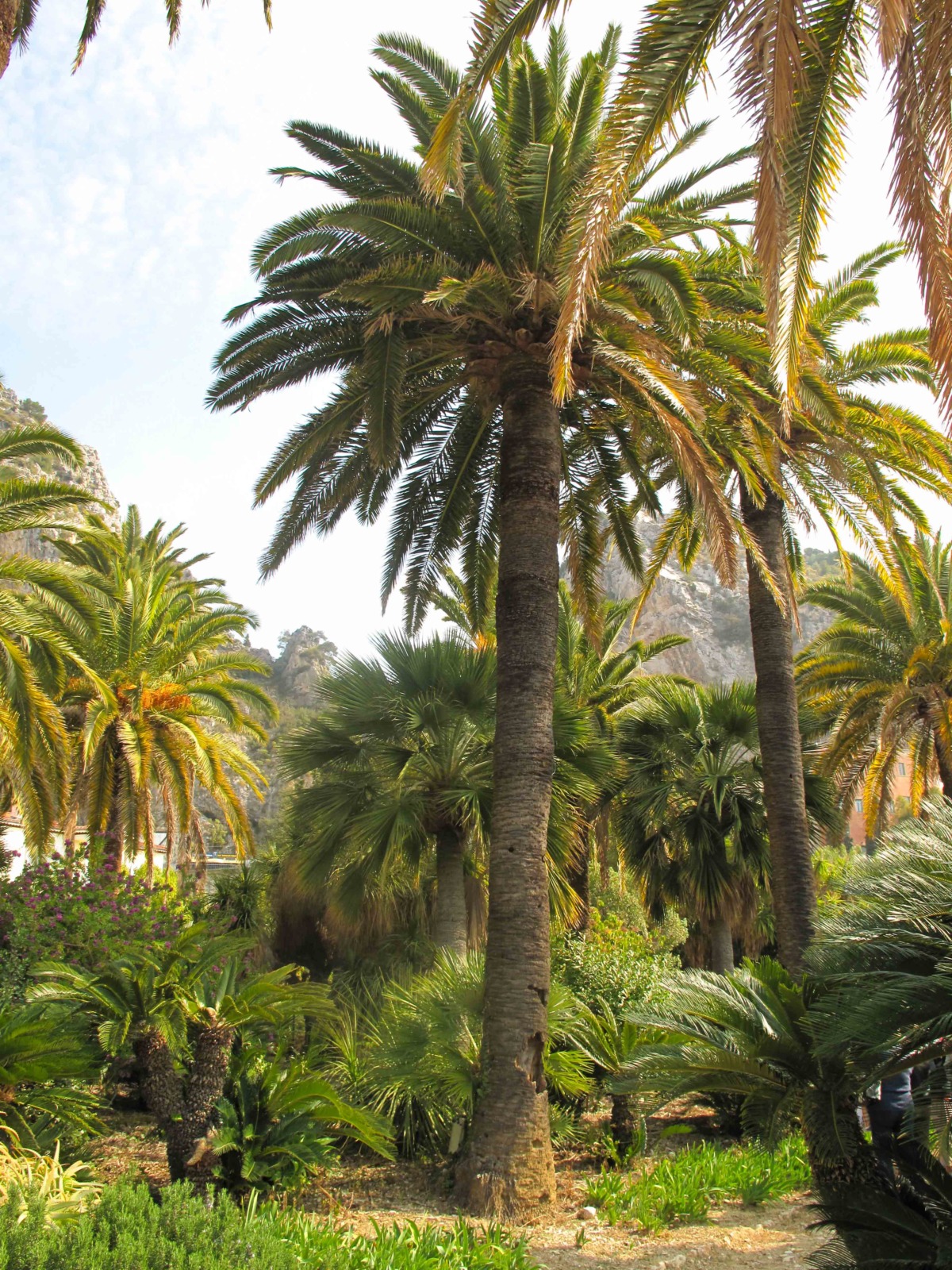
Domaine des Colombières
off Boulevard de Garavan / 06500 MENTON
The Domaine des Colombières overlooks the magnificent bay of Menton.

In 1918, Emile Ladan-Bockairy and his wife bought the villa and its private estate from philosopher Fouillée.
Then the Bockairy couple invited their friend, the German writer Ferdinand Bac (1859-1952) who was also a caricaturist, decorator, painter, ironworker and landscape designer. He rebuilt and extended the villa between 1919 and 1927. His design was inspired by ancient references and memories of his travels in Mediterranean countries.

Around the house, Bac also designed the garden. He essentially devoted it to Mediterranean plants and features colonnades, pavilions, little bridges and intimate little gardens.



A Mausoleum built atop a rocky hill contains the tombs of the couple and their friend, German writer Ferdinand Bac.

Parc du Pian
11 avenue Blasco Ibanez or boulevard de Garavan / 06500 MENTON
The Parc du Pian is an olive grove of more than three hectares located in front of the sea in the Garavan district.

The estate is home to more than 540 olive trees that are several hundred years old.
The olive tree is thus the star tree of the park. It symbolises abundance, glory, wisdom and peace.
The park is laid out as a restanque (a dry stone retaining wall).
Every spring, flocks of sheep come to graze in the park and ensure that it is maintained in an ecologically sound manner.
Finally, it is a popular Sunday walk for the Menton people. It is an ideal place for picnics, children’s games, daydreaming and contemplation.
Menton’s Parks and Gardens – English-French Vocabulary
(f) for féminin, (m) for masculin, (adj) for adjective and (v) for verbs
- botanical garden = jardin botanique (m)
- citrus fruit = agrume (m)
- domain = domaine (m)
- garden = jardin (m)
- flower = fleur (f)
- fountain = fontaine (f)
- Italy = Italie (f)
- lemon = citron (m)
- mausoleum = mausolée (m)
- Mediterranean Sea = Mer Méditerranée (f)
- palm tree = palmier (m)
- park = parc (m)
- plant = plante (f)
- sea = mer (f)
- terrace = terrasse (f)
- villa = villa (f)

Where to stay in Menton
If you wish to visit Menton’s Parks and Gardens and the French Riviera, it is important to choose the location of your base carefully, so as not to travel unnecessary distances each day. After all, the coastline stretches over several hundred kilometres… and the location of Menton on the French-Italian border allows for great excursions along the Italian Riviera.
![Menton French Riviera General View © MOSSOT - licence [CC BY-SA 3.0] from Wikimedia Commons](https://frenchmoments.eu/wp-content/uploads/2014/02/Menton-French-Riviera-General-View-©-MOSSOT-licence-CC-BY-SA-3.0-from-Wikimedia-Commons.jpg)
As you can guess, the accommodation possibilities in Menton are very vast.
There is bound to be an accommodation for every desire:
- Are you looking for a palace with a view of the sea?
- A charming bed and breakfast in the heart of a hilltop village?
- A villa surrounded by greenery?
- A comfortable campsite?
- Or one of the most unusual accommodations?
Find your accommodation here or browse the map below:
Find out more about Menton
- Our discovery guide of Menton
- Our discovery guide of the French Riviera
- Take part in the famous Lemon Festival
- Follow the Corniche Roads of the Riviera from Nice to Menton
- The Wikipedia article on Menton
- The Tourist Office Board of Provence-Alpes-Côte d’Azur
- Visit the official website of Menton’s Tourist Board
Have you been to one of Menton’s Parks and Gardens? If so, what is your favourite? Leave me a comment just below!
Pin it for later!

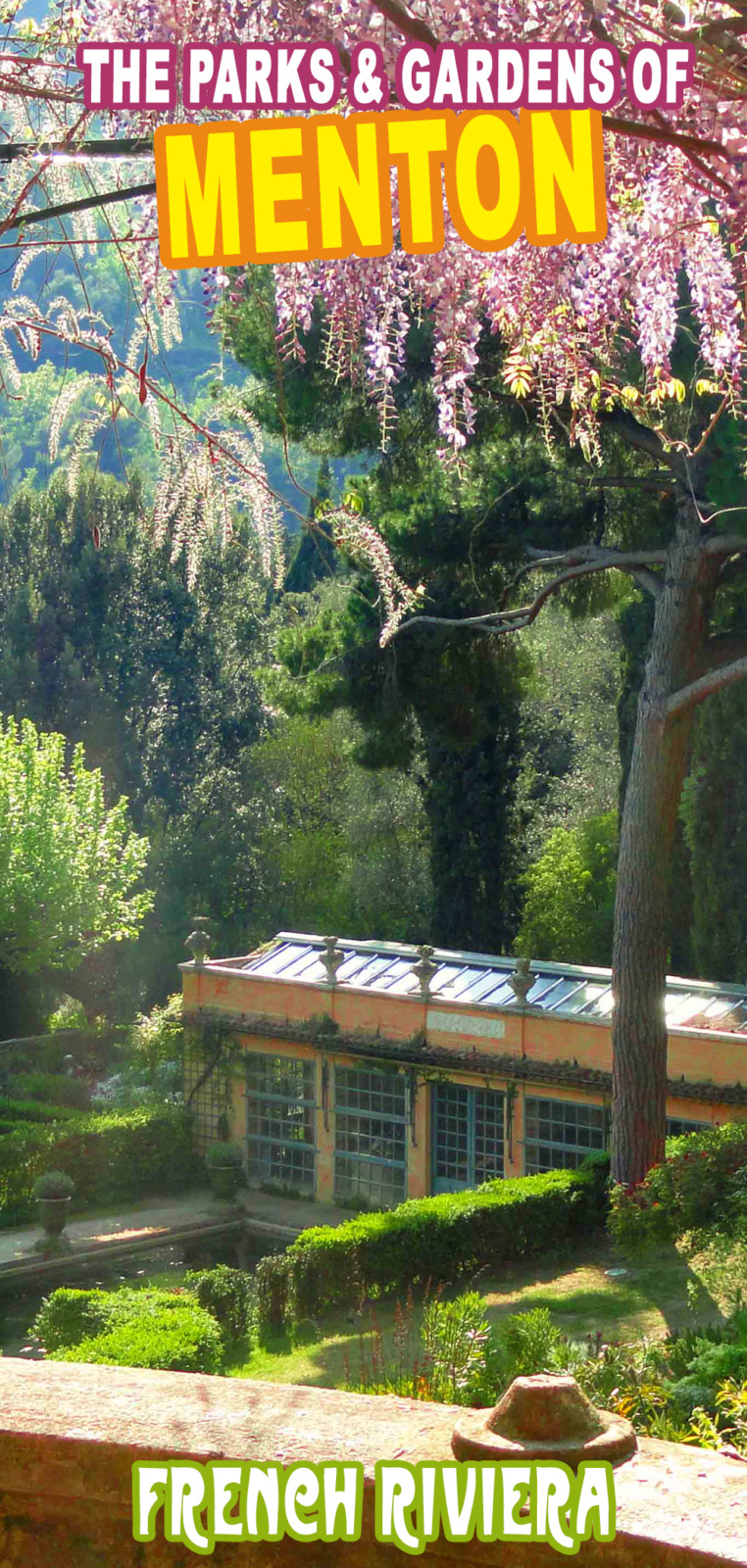
Featured image: Tangopaso (Public Domain via Wikimedia Commons)



